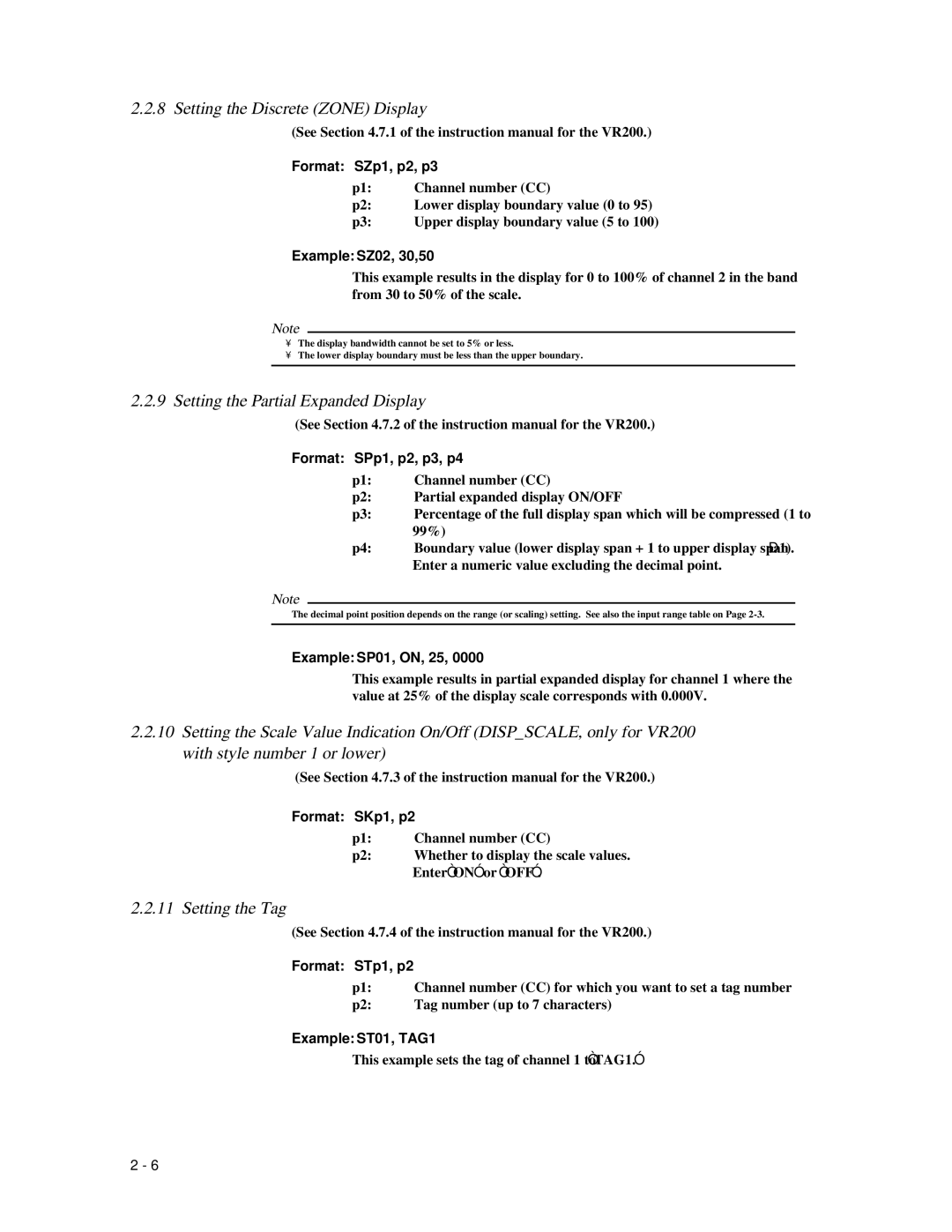
2.2.8 Setting the Discrete (ZONE) Display
(See Section 4.7.1 of the instruction manual for the VR200.)
Format: SZp1, p2, p3
p1: | Channel number (CC) |
p2: | Lower display boundary value (0 to 95) |
p3: | Upper display boundary value (5 to 100) |
Example: SZ02, 30,50
This example results in the display for 0 to 100% of channel 2 in the band from 30 to 50% of the scale.
Note
•The display bandwidth cannot be set to 5% or less.
•The lower display boundary must be less than the upper boundary.
2.2.9Setting the Partial Expanded Display
(See Section 4.7.2 of the instruction manual for the VR200.)
Format: SPp1, p2, p3, p4
p1: | Channel number (CC) |
p2: | Partial expanded display ON/OFF |
p3: | Percentage of the full display span which will be compressed (1 to |
| 99%) |
p4: | Boundary value (lower display span + 1 to upper display span – 1). |
| Enter a numeric value excluding the decimal point. |
Note
The decimal point position depends on the range (or scaling) setting. See also the input range table on Page
Example: SP01, ON, 25, 0000
This example results in partial expanded display for channel 1 where the value at 25% of the display scale corresponds with 0.000V.
2.2.10Setting the Scale Value Indication On/Off (DISP_SCALE, only for VR200 with style number 1 or lower)
(See Section 4.7.3 of the instruction manual for the VR200.)
Format: SKp1, p2
p1: | Channel number (CC) |
p2: | Whether to display the scale values. |
| Enter “ON” or “OFF”. |
2.2.11 Setting the Tag
(See Section 4.7.4 of the instruction manual for the VR200.)
Format: STp1, p2 |
|
p1: | Channel number (CC) for which you want to set a tag number |
p2: | Tag number (up to 7 characters) |
Example: ST01, TAG1
This example sets the tag of channel 1 to “TAG1.”
2 - 6
